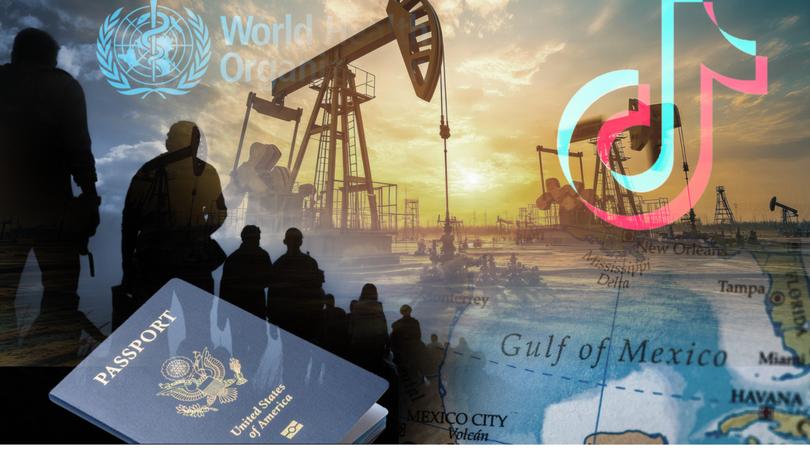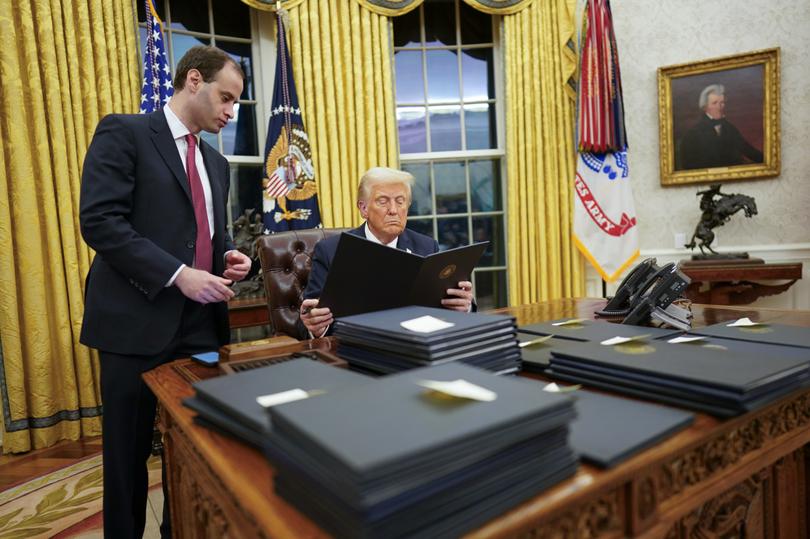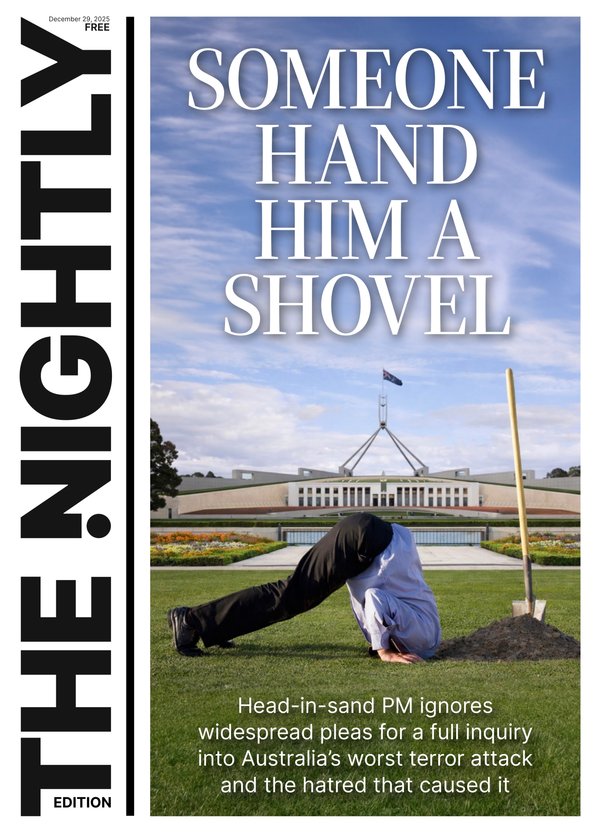THE WASHINGTON POST: Here are the executive actions and orders Trump signed on Day 1

Donald Trump began issuing executive actions Monday after being sworn into office as the 47th president of the United States, kicking off his second term in office at a signing desk inside Washington’s Capital One Arena with family members and allies behind him onstage, and a crowd of supporters in the audience.
On the 2024 campaign trail, Trump promised to impose broad tariffs on imports, expand domestic energy production and launch mass deportations.
Trump has also long vowed to dismantle federal regulations, exact revenge on his political enemies, uproot the federal bureaucracy he has referred to as the “deep state” and eliminate what he sees as government waste.
Sign up to The Nightly's newsletters.
Get the first look at the digital newspaper, curated daily stories and breaking headlines delivered to your inbox.
By continuing you agree to our Terms and Privacy Policy.There are limitations to what a president can legally do via executive action, and many of Trump’s orders are expected to be challenged in court. That legal process could slow down or halt their implementation.
Rescinding of Biden administration actions and freezing regulations
The president, in his first executive action, rescinded 78 executive actions implemented by the Biden administration.
The rescinded actions covered a wide range of topics.
The targeted actions were aimed at advancing racial equity, combating gender discrimination, addressing climate change, mobilising the federal response to the coronavirus pandemic, requiring additional ethics requirements for political appointees, addressing the root causes of migration, lowering prescription drug costs, imposing sanctions on Israeli settlers accused of violence against Palestinians in the West Bank and the withdrawal of offshore drilling from certain areas.
Additionally, Trump rescinded President Joe Biden’s 2021 order that had repealed a ban on transgender personnel serving openly in the U.S. military. Trump initially barred transgender troops from serving in the US military during his first term in office.
Trump subsequently issued a regulatory freeze pending an administration review.
Ending birthright citizenship in the United States
The US government will no longer recognize the citizenship of children born in the United States to immigrants who lack legal status, according to an order Trump signed Monday.
It also bars birthright citizenship for children born to people on temporary work, student and tourist visas.
The order, which is expected to face legal scrutiny, reinterprets the words “and subject to the jurisdiction thereof” in the 14th Amendment of the US Constitution, which grants citizenship to nearly all people born on US soil, to exclude babies born to parents illegally in the country.
Declaring a ‘national emergency’ on the southern border
Trump declared a “national emergency” on the U.S.-Mexico border as part of immigration-related executive actions.
One ordered a halt to refugee resettlement in the United States for “at least four months.” He also directed the military to make it a priority to “seal the borders” and end unlawful mass migration, drug trafficking and other crimes.
Trump ordered the defense and homeland security secretaries to take action “to deploy and construct temporary and permanent physical barriers” on the southern border.

The United States will stop allowing migrants who cross the border illegally into the United States, even if they are seeking asylum, per one of Trump’s directives.
He also ordered the restoration of the “Remain in Mexico” policy, which requires migrants to await asylum hearings in Mexico.
Another order allows the attorney general to “pursue the death penalty for all crimes of a severity demanding its use,” including crimes committed by migrants.
Making changes to the federal workforce
The president ordered federal workers to come back to the office. The action Trump signed directs agency heads to “take all necessary steps to terminate remote work arrangements and require employees to return to work in-person at their respective duty stations on a full-time basis, provided that the department and agency heads shall make exemptions they deem necessary.”
Trump also issued a freeze on federal hiring with exceptions for military personnel and jobs “related to immigration enforcement, national security, or public safety.”
He reinstated a policy that would strip employment protections from tens of thousands of federal workers. Trump stripped those protections in his first term in office, and Biden reinstated them.
Withdrawing from the Paris climate agreement
The president signed a letter to the United Nations to withdraw the United States from the Paris climate agreement.
Trump initially withdrew the United States from the accords during his first term in office, but under Biden, the country had rejoined it.
Ending ‘weaponisation’ of the federal government
A newly signed but vaguely written directive orders the U.S. attorney general and the director of national intelligence to review potential misconduct within the Justice Department, the Securities and Exchange Commission, the Federal Trade Commission and the intelligence community that may have occurred in the last four years.
Delaying enforcement of a federal ban on TikTok
Trump ordered his administration to delay enforcing a federal ban against TikTok, giving the app’s Chinese parent company more time to broker a deal with a potential American buyer.
Legislation signed into law and upheld by the Supreme Court required the Chinese parent company to divest or face a ban in the United States over concerns that the app poses a national security threat by potentially exposing American users to Chinese surveillance or propaganda.
TikTok has said those claims are unfounded. China hawks, including some Senate Republicans, balked at Trump’s plans over the weekend, saying there is no legal basis to extend the divestiture window.
The president cannot unilaterally overturn a law that was passed by Congress and affirmed in court, and his plans to halt enforcement are likely to face legal scrutiny.
Clemency for January 6 defendants
Trump issued a presidential proclamation commuting the sentences of 14 individuals charged with crimes related to the riot at the US Capitol on Jan. 6, 2021.
The proclamation also granted pardons “to all other individuals convicted of offenses related to events that occurred at or near the United States Capitol on January 6, 2021.”
Trump also ordered the attorney general “to pursue dismissal with prejudice to the government of all pending indictments against individuals for their conduct” on January 6.
Other directives
The president signed several other executive orders and actions, including:
- Issuing a directive barring the censorship of American citizens’ constitutionally protected speech by the federal government. The order specifically accuses the federal government of infringing on protected speech “under the guise of combatting ‘misinformation.’”
- Issuing a directive aimed at addressing the “cost-of-living crisis” in the United States.
- Withdrawing the United States from the World Health Organization.
- Revoking any security clearances held by his former national security adviser, John Bolton, and the former intelligence officials who signed on to a letter calling the Hunter Biden laptop story Russian disinformation.
- Granting interim security clearances to certain personnel on a list provided by the White House counsel’s office.
- Directing his administration to make recommendations to beautify federal civic architecture.
Maegan Vazquez, Maria Sacchetti, Nick Miroff, Lauren Meckler, Hannah Natanson, Cristiano Lima-Strong, Evan Halper, Tony Romm, Isaac Arnsdorf and Jacqueline Alemany contributed to this report.
© 2025 , The Washington Post
